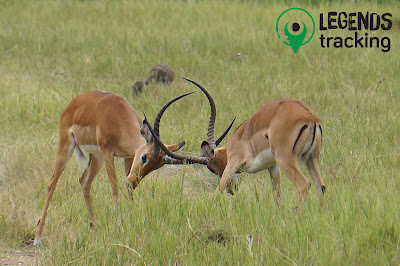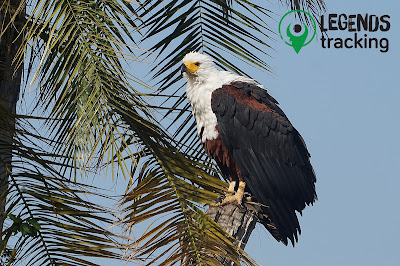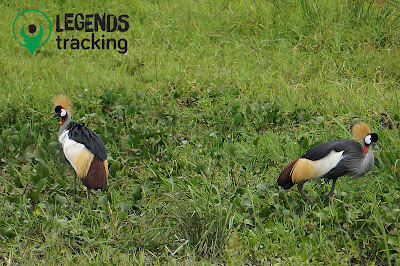High on the slopes of Kinder Scout, Mermaids Pool derives its name from a fishy legend passed down through the generations. With slightly dubious variations on the ending: If you happen to see the Mermaid on Easter eve, she will either drag you into a watery grave, or bless you with eternal youth. Depending upon her mood.
We delve deeper into these tales on my annual Mermaids Pool Legends and Scandi Brunch guided walk, for which I schedule a join-a-group date around Eastertime each year. (And is also available on request as bespoke private guiding for individuals, families, groups of friends and corporate experience teams).
https://rangerexped.co.uk/kinder-scout-brunch/
Mermaids Pool is also said to be a holy well or sacred spring of pre-Christian ritual.
We know from archaeological evidence discovered across the British Isles that Bronze Age (circa 2500 BCE to 800 BCE) ritual was intertwined with water and liminal places. This continued into the Iron Age (circa 800 BCE to 100 CE) where Bronze Age type ritual prevailed with reverence for the same places. Through ritual, People retained a sense of stability and continuity in a society that was changing and population increasing.
“Essentially Bronze Age rites were celebrated, but using Iron Age artefacts” – Francis Pryor
Among the votive offerings rediscovered through archaeological digs and by metal detectorists are ornate jewelry, daggers, swords, shields, carts and artefacts of domestic function. Often unused and pristine, it appears that items which were in some way special, were intentionally put beyond use. Some were purposely broken prior to deposition. Through these acts, people showed appropriate reverence for ancestors or spiritual beings as they thought of them in their beliefs.
 |
Ritual deposition of artefacts
Various bronze swords, systematically put beyond use - 1000 to 800 BCE
The Great Torc - Snettisham - buried around 100 BCE
Shield facing in sheet bronze - from the River Witham, nr Lincoln - 400 t0 300 BCE
Photo: S Westfield, taken at the 2022 World Of Stonehenge exhibition
Montage images not to scale |
Using phenomenology and clues from the Bronze Age, we take an imaginative journey of an initiate undergoing a coming of age ceremony along the Kinder River. As much as possible, we put aside modern predispositions to recreate a metaphorical and literal rite of passage through the landscape.
The journey starts at the bottom of the valley within the realms of daily life in the Bronze Age.
Accompanied by elders and perhaps other age-set clan members, our initiate follows the river upstream. Through woodland where deer and wild boar might have been hunted.Processional ceremonial monuments from the Neolithic (circa 4100 BCE to 2500 BCE) are well documented in the form of cursus earthworks and henges. Perhaps their roots lie even earlier in the lives of the Mesolithic hunter gatherers. We know from the orientation of features that along with themes of exclusion and transformation, celestial alignment was of deep importance to Neolithic cosmology, which continued into the Bronze Age. As land usage changed, the ritualization changes too, as illustrated by the various phases of repositioning the megaliths at Stonehenge.
The next phase is cold immersion in the cleansing pools as preparation for the next stage of initiation. From this point onward there is visible and physical separation from the uninitiated.
Cleansing ritual has many ethnographic parallels in religion and indigenous culture. While we should be careful of drawing unsubstantiated inferences, which may never be provable, the essence of cleansing and transformation seems an innate aspect of the human condition. There are many examples: Jesus’ baptism in the River Jordan, Wudu washing before prayers in Islam, washing of feet in ancient customs symbolizing hospitality and humility, and of course the ubiquitous washing of hands before a meal. There is a practical element to these acts, but to separate the practical from the spiritual is to miss half the context.
In 2025 Bruce Parry returned with a new series of Tribe. He visits the Waimaha people of the Amazon, to learn more about their spiritual beliefs and forest rituals. But before he can participate he must prepare with a several rounds of what has to be deeply uncomfortable purgative cleansing.
https://www.theguardian.com/tv-and-radio/2025/mar/30/tribe-with-bruce-parry-review-he-loses-his-mind-on-drugs-and-it-doesnt-disappoint
Our initiate approaches the next phase with some trepidation. A trial by endurance to prove strength and worthiness. To stand under the pounding cascade of the waterfall. Not to flinch from the frigid flow until the shaman is given a sign by the ancestors that the initiate has undergone the required metamorphosis.
The waterfall is a large natural feature which can be seen at a distance for many miles around. But as one walks upstream, it is mostly hidden from view until close up. It is approached from the shady northern facing side of the valley. It is a foreboding place. The cliff faces either side, narrowing, amplifying the noise of the water and adding to the sense of enclosure. A southwesterly wind blows up the valley, causing the water to curl back upwards, before falling again. A mist of cold spray saturates the initiates before they reach the cascade. Those which pass the test, proceed to the warm sunlit southern face and on to Mermaids Pool.

In the whole of the British Isles, the population during the Neolithic is estimated at just 100,000. Which rose to 250,000 in the early Bronze age. So, no doubt, these structures had a practical use in bringing bands of people together for intermingling of genes, the rekindling of bonds and bartering items. As well as certain rites of passage. But the separation of the practical and ritual, domestic and worship, are projections of our own modern lifestyles. In prehistory, these aspects of life would have been interwoven, even indistinguishable. To isolate and separate them may have been unintelligible to the minds of people in the Neolithic, Bronze and early Iron Age.  |
Evidence of shamanism in the Mesolithic?
A woman buried with a ornate headdress,
laid upright in a crouched position and covered in red ochre.
She was 25-35 years old and accompanied by a baby of 4-6 months.
Photo: S Westfield, taken at the 2022 World Of Stonehenge exhibition.
|
Physical separation is a common theme in rituals associated with rites of passage. Within the Masai of East Africa, age-set groups embark on a symbolic journey - a temporary relocation to a designated manyatta built specifically for the occasion. This separation from their families represents the start of social detachment from childhood, preparing them for new responsibilities. The ritual process reinforces intergenerational knowledge transfer and collective memory, sustaining Masai identity.https://masaimarapark.com/enkipaata-ceremony/
Acts of separation, enlightenment and transformation prevail in today's society. Just look at the tradition of young people leaving home to study at college and university, passing tests, then returning to join the echelon of the workers. In contemporary story telling the monomyth, encompassing the same themes, is the framework for so many best selling works of literature (see Paulo Coelho's The Alchemist) and iconic cinema (Saving Private Ryan, Shawshank Redemption, Life of Pi).
The shaman raises his stave. The initiate has passed the test. Although nearly paralysed with cold, he keeps his posture upright and face set with appropriate solemnity as he moves around to the sunlit side of the valley. The procession then continues to Mermaids pool.
When viewed from water level of Mermaid’s pool, there is a sense of the infinite. The water reflects and merges with the sky. It also faces westward. When the weather is favourable, the sun casts burnt orange hues across the plains and toward the sea. Where the mountains of Snowdonia are silhouetted. It is here that our initiate gives thanks to the ancestors and places a votive offering into the pool.
So the association of Mermaids Pool with a place of ancient ritual is not without reasonable foundation. But our journey does not necessarily end here. We can further explore themes of separation, exclusion and restriction through ascent. In winter and poor conditions, the top of Kinder plateau is a forbidding place. It would have been no easier an environment to traverse in the Bronze age than it is now.
Our ancestors may have looked upon the plateau as a forbidden place. It’s watery bogs the realm of those who had passed into the spirit world. Where only those with the proper induction, knowledge and blessing from ethereal souls were allowed to venture.
Our initiate has distinguished himself among his peers and the elders. He is selected to accompany the shaman on what will be the first of many instructive treks onto the plateau. The shaman first shows him the correct veneration at the great guardian rocks for safe passage through to the realm beyond. And then he is led to the source of the river. A place from where all the energy of the ancestors is reborn and flows to nurture the clan.This fits a practical purpose of not becoming lost in the maze of cloughs and channels. But the bogs might be the imagined, or maybe literal, resting place of ancestor spirits. Closer to the sky and therefore worthy of reverence and respect. Again, the practical and ritual aspects of cosmology inseparable to how the landscape was seen and understood.
There have been no finds of Bronze-Iron age bog bodies on Kinder. Such as Lindow Man, just a few miles away on the Cheshire Plain, unearthed in 1984 by peat cutting. Having been ritually sacrificed and deposited in the bog sometime between 2 BCE and 119 CE. But a physical presence of the deceased on Kinder may have not have been as important as the belief of their residing in this ultimate boundary layer between earth and sky.
“I cannot believe these concepts arose fully formed and fresh…Certain places have roots that go back a very long way, but the ideas, stories, myths and legends that make these places so special may have origins that can ultimately be traced back…thousands of years”. – Francis Pryor
You too can experience this wonderful journey, taking in the panoramic scenery from unique viewpoints. Trekking the river Kinder from its confluence with the Sett to its source. All in one very special day, guided with myself...
River Kinder Trek To The Source
https://rangerexped.co.uk/kinder-river-sett-to-source/
Stu Westfield
Ranger Expeditions & Ranger Ultras Trail Running
****
If you liked this topic, I invite you to browse my other blog postings.
With a wide variety of stories and features including: Nature, conservation, history, culture, culinary treats, expeditions, trail running and guided adventures.
To join in my guided walks...
https://rangerexped.co.uk/


























































